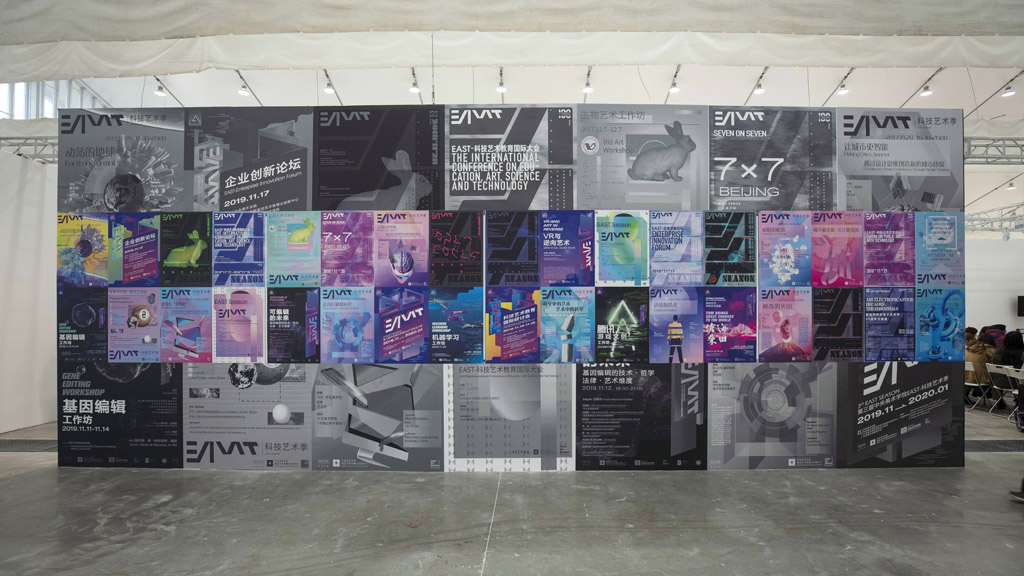实验艺术学院的使命 / 现场教学
The Mission of SEA / Teaching On-Site
中央美院实验艺术学院包含了实验艺术、科技艺术、社会性艺术三大教学方向。其中实验艺术方向保持了学科的最初内涵,研究传统与当代的继承、发展与创新,下设传统语言课程体系与物质化呈现课程体系。科技艺术以人工智能、生物科技、人机交互、数字媒体、新型材料等高新科技为全新方向,是具有广泛社会需求和巨大创新能力的艺术、科技交叉的领域。而社会性艺术方向注重艺术实践与社会公共空间相结合,在社会激流中完成实验和创新,引导学生超越小我,在社会历练中获得大我,实现自己的价值。在本次教博会中,实验艺术学院将基于上述三个方向,邀请中央美院的老师,以及艺术家和行业资深人士作为客座教师,在展区中专设三个教室的展开现场教学,以呈现央美实验艺术学院的教学方式和理念。
School of Experimental Art (SEA) of Central Academy of Fine Arts (CAFA) has three majors, Experimental Art, Science and Technology Art, and Social Art. The Experimental Art has direct connection to the core of the discipline by studying the traditional and contemporary practice. It has two curriculum systems, the traditional language courses and the courses of materialization of presentation. The Science and Technology Art focuses on the new technology fields as AI, biotech, humancomputer interaction, digital media, and new material. It is a realm with interaction between art and science, and with great potential of social need and creativity. The Social Art concerns more on the connection between art practice and the public space. The students are encouraged to exceed their ego and reach the larger self by social practice, accomplish their experimental and creative work in the waves of the society, and eventually fulfill their self-worth. As a presentation at FutureLab, SEA builds three classrooms in the exhibition hall according to the above majors. The teachers from CAFA, and the artists and other practitioners in the art fields are invited to give on-site lectures and workshops to the public. By this way, we hope to demonstrate the pedagogical methodologies and ideas of SEA.
中央美术学院
Central Academy of Fine Arts
中央美术学院成立于1950年, 是中华人民共和国教育部直属的唯一一所高等美术学校。中央美术学院现设有八个专业分院,致力于建设造型、设计、建筑、人文等学科群相互支撑、相互影响的现代形态美术教育学科结构。学院在构建新世纪中国特色的美术教育体系中发挥引领作用,以鲜明的中国特色、高水平的教学质量和研究成果,赢得国际美术教育界的高度赞誉。
Founded in 1950, the Central Academy of Fine Arts (CAFA) is the only institution of higher education for fine arts under the administration of the national Ministry of Education. The academy, divided into eight departments, is committed to building a discipline structure of modern education for fine arts where disciplines such as plastic arts, design, architecture, and humanities support and influence each other. It strives to take lead in building art education system with Chinese characteristics in the new century so as to be highly praised by the international art education community.

